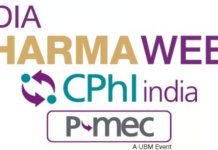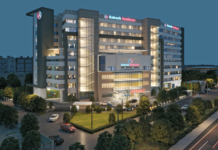Being vigilant against overcharging by hospitals, focus on retail business has helped
Chennai December 12, 2013: At a time when insurance companies are losing money in providing health cover, Star Health Insurance has reported profits – not just from investments, but also from the core business of underwriting too.
The Chennai-based standalone health insurance company attributes this mainly to two factors — exercise of strict control against hospitals overcharging and keeping away from group insurance business. Run by V. Jagannathan, a former Chairman and Managing Director of the public sector United India Insurance, the company has come out with several innovative products such as providing cover for treatments that do not involve hospitalisation, insurance for old people up to 65 years of age and for people with diabetes and AIDS. In an interview to Business Line, Jagannathan says health insurance is profitable provided the pricing is appropriate and the insurer is vigilant against overcharging. Excerpts:
What was your claims ratio last year? (Claims ratio is the percentage of value of claims paid over the premium earned)
It has been in the range of 63-65 per cent, while the industry average has been in the range of 70-80 per cent.
Where do you stand when compared to other health insurance companies?
We are in an enviable position. Among the four standalone health insurance companies, we stand first in total health premium, number of policies issued and number of lives covered. Among the private insurers we are in the second place in securing health premium. Even among all the general insurance companies, Star Health is in the 6th position after the four public sector companies and ICICI Lombard.
What would you attribute your success to?
If you are very clear about what you sell and to whom, and if you are very careful at the time of underwriting and prompt at the time of delivery (settlement), claims ratio will not exceed 65 per cent. In the past six years, our claims ratio never crossed that level.
Secondly, we focus only on retail business. We consciously keep away from group insurance, as it is not profitable at this point of time.
It is generally believed that hospitals overcharge when they know the insurance company is paying. How do you keep claims under check?
We have the maximum number of network hospitals in our portfolio. We have agreed rates for medical procedures with them. We also have senior doctors with us. Basically, when a patient is admitted, our doctors will visit the hospitals and given their opinion on the type of medical condition and the required or appropriate treatment, without compromising on the quality of treatment and satisfaction of our customers. The specialists on board will also process claims.
What was your growth last year and how has your performance been so far this year?
Last year, we could complete a premium of Rs 770 crore in the retail segment (individuals) — a growth rate of 53 per cent.
Till November 2013, our growth rate has been at 44 per cent. We expect to end the current financial year with premium income of Rs 1,100 – 1,200 crore. There are good chances that we will make underwriting profits of between Rs 7-10 crore. Add that to the expected investment profits of Rs 40 crore, our profit this year will be close to Rs 50 crore.
What are the innovative covers you brought into the market?
We were the first to launch an exclusive product for senior citizens, which continues to be one of our flagship products. Considering the high cost involved in certain critical illnesses, we came out with a top-up plan called Star Super Surplus. We are the only insurer to devise a combi product – both life and health. Star Cardiac Care is another innovative product from us.
Recently, Apollo Munich launched a new policy for diabetic patients….
We are the pioneers in designing a policy for known diabetic patients which has been appreciated by people who are affected by this syndrome. Gaining experience over the years, a new diabetic safe policy with a host of benefits is on the way.
With many new companies entering the arena, what are your plans for sustenance?
Health insurance penetration in India is still low and there are opportunities for growth for all players. The increasing health cost and growing awareness on health insurance are bound to accelerate growth.
An IRDA study on health insurance says the market in 2015 will comprise 125 crore people paying Rs 36,000-crore premium.
The industry has collected a premium of only Rs 15,340 crore during 2012-13.
The health insurance sector is poised to grow in the range of 20-25 per cent every year for the next five years. With our product portfolio, sales force and network offices across the country, we should be able to face the challenges from competition.
























